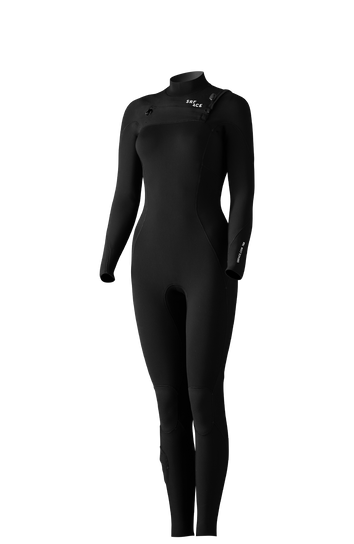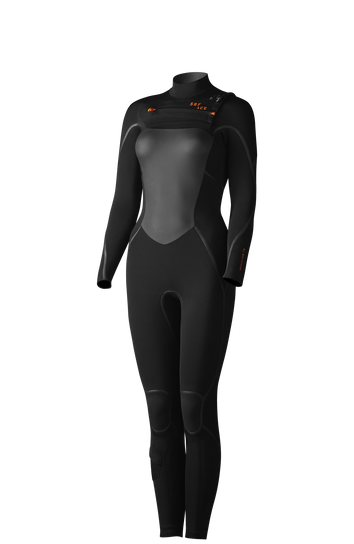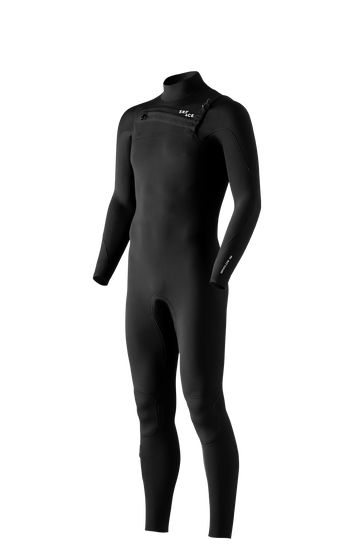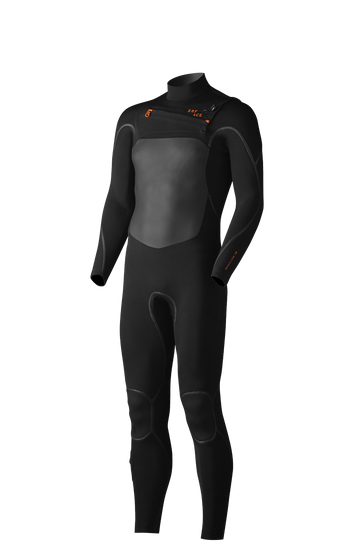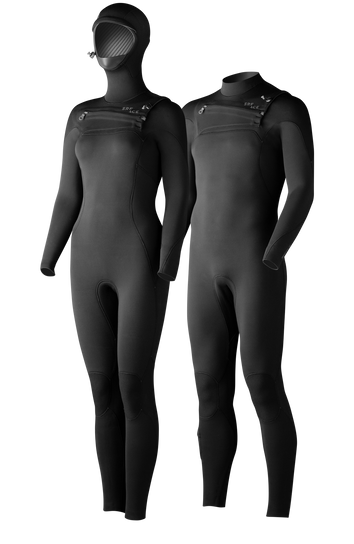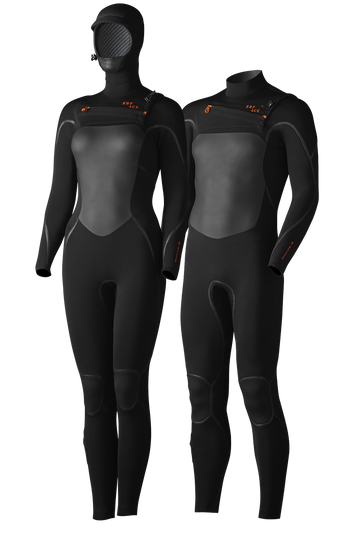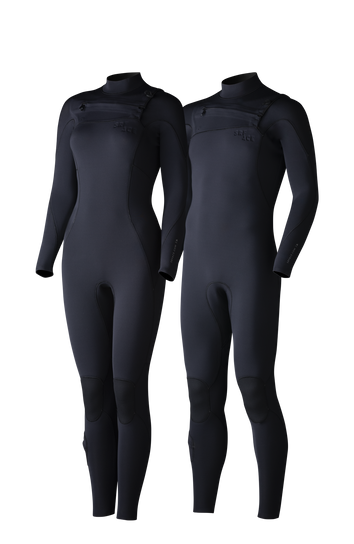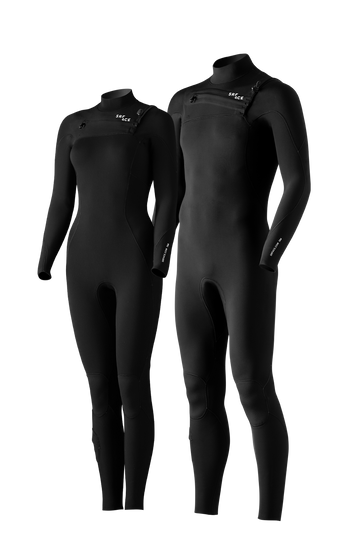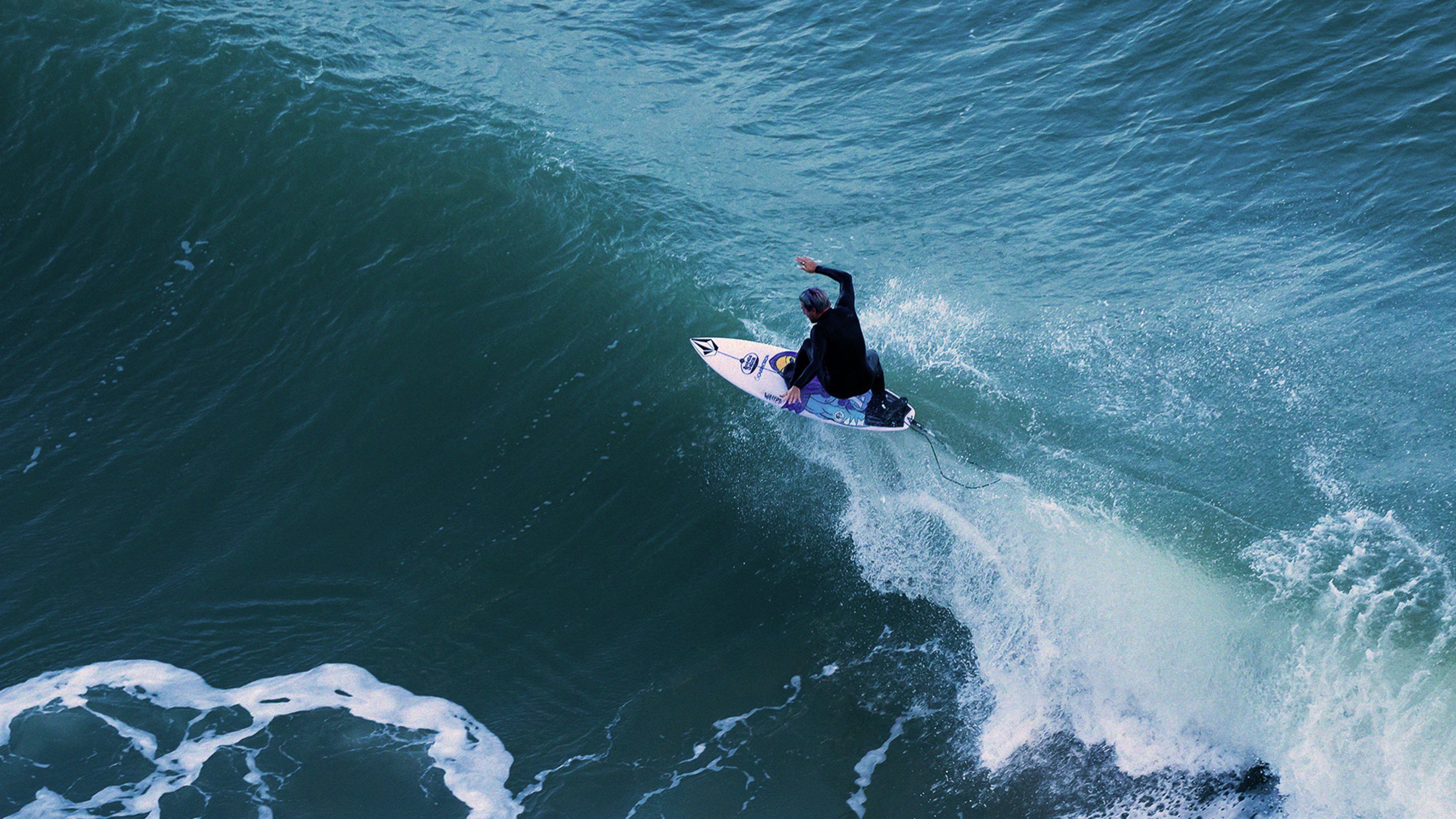
WETSUIT DESIGN PROCESS
The military in the 1930s and ’40s gave birth to wetsuit design, so divers could stay in cold water longer. DuPont made this possible in the 1930s with the invention of neoprene rubber. Wetsuit design has improved significantly over the decades. However, a modern wetsuit has to tick the right boxes to be a good product. This is a combination of panel layout and panel sizes, styling, neoprene thickness, neoprene type and quality, flexibility (foam elongation), softness, colour, seam construction, total seam length, and zip construction. These factors all influence the price of the final product. What is good wetsuit design? To create the ultimate wetsuit, a wetsuit designer has to combine the right material choices with a functional panel layout.
RESEARCH AND WETSUIT TYPES
Firstly, the wetsuit designer defines the type of wetsuit he is designing. In this case, we’ll use a 5/4 mm high-end chest zip wetsuit as an example. It all starts with market research to make sure the wetsuit is competitive in features, performance, and price.
Choose your wetsuit
PANEL LAYOUT AND WETSUIT STYLING
To design the ultimate wetsuit, we combine good design with the right material choices. The design process starts with (analogue or digitally) sketching out the seam of the wetsuit. A designer does this on paper or digitally. After this, the rough sketch quickly transforms into a digital 2d, or 3d design. This drawing shows different views of the wetsuit to visualize the panel layout. This includes zip placements, an indication of the main features and logo placements.
 SEAM PLACEMENT
SEAM PLACEMENT
The seam placement defines the final panel layout and the overall look of the wetsuit. Seams are not primarily there to make a wetsuit look good, they are strictly functional. They can, however, make a wetsuit look good or bad. We place seams strategically to avoid irritation or rash on the inside of the seams. Good seam placement avoids restriction while moving around. Seams make up the panel layout, which in turn is influenced by the neoprene thickness used in different parts of the body. We use thinner neoprene in areas that need more flexibility, such as the armpits. Similarly, we use thicker neoprene on the chest, back and upper legs to keep the body warmer. No one likes an ugly wetsuit, so styling has an impact on the panel layout. But when designed right, form follows function.
 MATERIAL SELECTION
MATERIAL SELECTION
After we’ve fine-tuned the panel layout and styling, it’s time to select the right materials for the wetsuit. There are multiple types of neoprene foam, neoprene outside and inside lining to choose from. The type of foam and linings selected are the main factor in the price calculation of the final product. High-end wetsuits use extremely flexible, soft and light neoprene foam laminated with ultra-stretch lining types. Next, we’ll have to select the lining colour. This is most commonly black, as black absorbs the heat from the sun the best. On other words, a black wetsuit is warmer than a light coloured one.
 SEAM CONSTRUCTION
SEAM CONSTRUCTION
After that, the seam construction has to be defined. A basic winter wetsuit will have glued and blind stitched (GBS) outside seams without any reinforcements. A more high-end wetsuit will have a rubber sealed outside seams applied on top of the blind stitch seams. We can add neoprene inside tape on all or some seams for extra seam reinforcement. This prevents seam rash on the skin. We can also use reinforcement patches to strengthen certain stress points or areas where multiple seams or different panel thicknesses come together.
WETSUIT PATTERNS
The template used to cut out different panels out of a sheet of neoprene to make up a wetsuit, is called a wetsuit patterns. Moreover, the pattern determines the seam placement and thus the panel layout. A designer usually draws these patterns digitally in CAD, based on the designs of the panel layout. Thereafter, the designer transfers the digital patterns onto paper and cuts them out. We use these first paper patterns to create neoprene panels that form a wetsuit.
 CUTTING EFFICIENCY
CUTTING EFFICIENCY
We calculate the yield rate by laying out the flattened-out wetsuit panels, or patterns, on a sheet of neoprene. This determines the cutting efficiency and the amount of waste material, production efficiency and cost. In other words, the bigger and more complex each pattern, the more material waste. Similarly, smaller and more rectangular patterns make for a better yield rate and less waste. In conclusion, there is a fine balance between minimal seam design, price and waist yield rate. Wetsuits with fewer seams have a lower probability of causing seam irritation and this leads to fewer seams potentially starting to leak. But fewer seams need bigger panels and create more (waste) material. Small panels mean less waste material, but more seams. This takes longer to stitch, so the labour cost will go up and there is more room for error and leaky seams over time.
THE ULTIMATE WETSUIT
The right balance of seam placement, panel layout, and panel size will make the ultimate wetsuit. We use patterns to size grade the final wetsuit design into different wetsuit sizes. Our skilled pattern makers do this digitally to ensure every wetsuit size fits the right body type.
PROTOTYPING
After the designer is happy with the design, seam placements, colours and logos, the wetsuit starts its prototyping phase. We make a prototype based on the final design. Our designer and our factory will be in close contact with each other. They discuss issues and possible changes that are required to ensure the best possible product that is ready for future bulk production.
 TESTING PHASE
TESTING PHASE
The testing phase is the first real test for our wetsuit prototype. Firstly, the static fit is tested on a fitting model with the right size to fit the wetsuit prototype. After that, the fit is confirmed or pattern changes are noted and the wetsuit will be tested by surfers in various conditions. The wetsuit testers check for water leaks, seam irritations, excess materials or tight areas. The wetsuit will then undergo a durability test to ensure that the wetsuit lasts over time. The feedback will be collected and discussed by the designer, who will then finetune the design and patterns. The updated design and changes will be discussed with the wetsuit factory. The factory produces a new prototype that will undergo the same test cycle. This process is repeated multiple times until all potential problems are solved and the wetsuit is ready for production.
 WETSUIT PERFORMANCE AND COMFORT
WETSUIT PERFORMANCE AND COMFORT
The amount of flexibility and the ability to keep you warm determine wetsuit performance. A high-end wetsuit is extremely flexible and doesn’t restrict you in your movements in the water, even when thicker neoprene is used to keep you warm. The more flexible and soft a wetsuit is, the higher the comfort. But the right fit, thickness and panel layout of your wetsuit are important factors too. Comfort and performance play a big role in how wetsuits are designed.
Featured wetsuits
THE FUTURE OF WETSUIT DESIGN
How will wetsuits be designed in the future? Wetsuits have been around for years and have been perfected and redesigned over decades in terms of styling, function and durability. A proven panel layout has learned from its previous generation wetsuits through testing, trial and error and hours spent in the water. You can share your valuable feedback about the wetsuit you use. This allows us to use your feedback to improve our products.

Ready to surf?
Shop from €159



